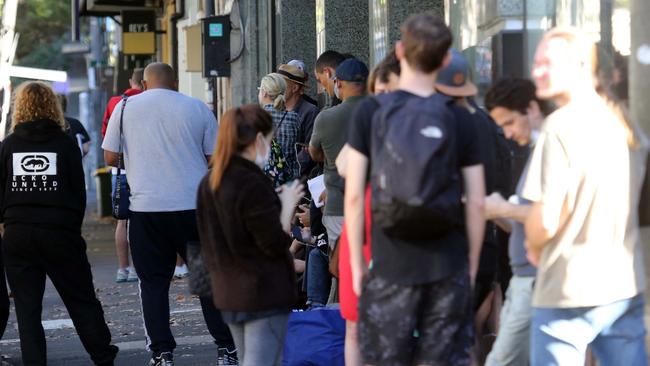
The labour force figures for March were collected in the first half of the month. They show a slight rise in the overall rate of unemployment but reasonably strong employment growth and a steady number of working hours. The rate of underemployment – people who want more hours of work – also rose only marginally, by 0.1 percentage points in seasonally adjusted terms.
Take it from me, this is as good as it’s going to get for some time. We know from other sources, including the long queues at Centrelink as well as the number of businesses in financial trouble, that the deterioration in labour market conditions since mid-March has been substantial and rapid.
Just this week, the CBA Economics released figures on total credit and debit card spend for the week ending April 10. They showed that overall spending was 20 per cent down on a year ago. For spending on clothing, the decline was 58 per cent; for transport, it was minus 44 per cent; for personal care, minus 61 per cent; and for recreation, minus 37 per cent. A number of these areas are very labour intensive.
The declines were also greatest in NSW and Victoria, the economies which are also being adversely affected by the sharp decline in net overseas migration
The more significant issue is where the labour market is now and where it is heading. As those on JobKeeper won’t be counted as unemployed, this will limit what we observe to be the rise in the unemployment rate.
Even so, it’s easy to see the overall rate of unemployment heading towards 10 per cent quite quickly. The rate of underemployment may rise even proportionately more as many workers have their hours of work cut back, particularly in professional services
Working from home seemed like the answer to some of our prayers, but it is now clear that a lot of private sector work is drying up and therefore the scope to keep all these home-based workers fully occupied at full pay is diminishing.
The hope is that the public health-informed easing of the restrictions will allow many businesses to bounce back which, in turn, will take back their employees. The more likely scenario is ongoing labour market weakness as some businesses simply don’t return and consumer spending remains very weak.








The thing to remember about unemployment figures is that they are backward looking. They don’t tell us much about what is going to happen. And in the context of the COVID-19-related restrictions imposed from mid-March, they tell us even less than usual.